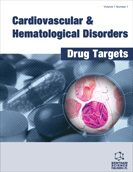Abstract
Epidemiological data have demonstrated a strong relationship between blood pressure (BP) and cardiovascular disease (CVD) risk and have shown the importance of systolic BP (SBP) as a determinant of such risk. The importance of BP as a risk factor has been further emphasized by a World Health Organization (WHO) report which identified high BP as one of the most important preventable causes of premature morbidity and mortality in developed and developing countries. There is now data available on the safety and effectiveness of different classes of BP-lowering drugs, including diuretics, angiotensin-converting enzyme inhibitors (ACE-Is), dihydropyridine and non-dihydropyridine calcium channel blockers (CCBs), beta-blockers and angiotensin receptor blockers (ARBs). In this review we discuss classification of BP stages, goal of therapy, lifestyle modifications and optimal BP control in individual patients. The detection and optimal treatment of hypertension is likely to significantly ameliorate CVD risk.
Cardiovascular & Hematological Disorders-Drug Targets
Title: Contemporary Management of Hypertension - How to Optimize Therapy
Volume: 9 Issue: 3
Author(s): Steve Leung and Debabrata Mukherjee
Affiliation:
Abstract: Epidemiological data have demonstrated a strong relationship between blood pressure (BP) and cardiovascular disease (CVD) risk and have shown the importance of systolic BP (SBP) as a determinant of such risk. The importance of BP as a risk factor has been further emphasized by a World Health Organization (WHO) report which identified high BP as one of the most important preventable causes of premature morbidity and mortality in developed and developing countries. There is now data available on the safety and effectiveness of different classes of BP-lowering drugs, including diuretics, angiotensin-converting enzyme inhibitors (ACE-Is), dihydropyridine and non-dihydropyridine calcium channel blockers (CCBs), beta-blockers and angiotensin receptor blockers (ARBs). In this review we discuss classification of BP stages, goal of therapy, lifestyle modifications and optimal BP control in individual patients. The detection and optimal treatment of hypertension is likely to significantly ameliorate CVD risk.
Export Options
About this article
Cite this article as:
Leung Steve and Mukherjee Debabrata, Contemporary Management of Hypertension - How to Optimize Therapy, Cardiovascular & Hematological Disorders-Drug Targets 2009; 9 (3) . https://dx.doi.org/10.2174/187152909789007061
| DOI https://dx.doi.org/10.2174/187152909789007061 |
Print ISSN 1871-529X |
| Publisher Name Bentham Science Publisher |
Online ISSN 2212-4063 |
 6
6
- Author Guidelines
- Bentham Author Support Services (BASS)
- Graphical Abstracts
- Fabricating and Stating False Information
- Research Misconduct
- Post Publication Discussions and Corrections
- Publishing Ethics and Rectitude
- Increase Visibility of Your Article
- Archiving Policies
- Peer Review Workflow
- Order Your Article Before Print
- Promote Your Article
- Manuscript Transfer Facility
- Editorial Policies
- Allegations from Whistleblowers
- Announcements
Related Articles
-
Safety of Nanoparticles in Medicine
Current Drug Targets Neonatal Brain Hemorrhage (NBH) of Prematurity: Translational Mechanisms of the Vascular-Neural Network
Current Medicinal Chemistry Targeting CSCs in Tumor Microenvironment: The Potential Role of ROS-Associated miRNAs in Tumor Aggressiveness
Current Stem Cell Research & Therapy Approaching the Golden Age of Natural Product Pharmaceuticals from Venom Libraries: An Overview of Toxins and Toxin-Derivatives Currently Involved in Therapeutic or Diagnostic Applications
Current Pharmaceutical Design Metabolic Effects of a Diet with Inulin-Enriched Pasta in Healthy Young Volunteers
Current Pharmaceutical Design Role of Inflammatory Cells and Toll-Like Receptors in Atherosclerosis
Current Vascular Pharmacology Pericyte Loss in Diabetic Retinopathy: Mechanisms and Consequences
Current Medicinal Chemistry Impact of Diabetes on Vasculature: Focus on Nervous System
Current Diabetes Reviews Infection and Malignancy Risk in Patients Treated with TNF Inhibitors for Immune-Mediated Inflammatory Diseases
Current Drug Safety Curcumin Potentiates The Ability of Sunitinib to Eliminate the VHL-lacking Renal Cancer Cells 786-O: Rapid Inhibition of Rb Phosphorylation as a Preamble to Cyclin D1 Inhibition
Anti-Cancer Agents in Medicinal Chemistry Vitexin with its Derivatives is Responsible for the Cholinomimetic Properties of <i>Penianthus longifolius</i> Extract which Stimulates Muscarinic Receptors
The Natural Products Journal Matrix Metallopropteinases in Heart Failure
Current Topics in Medicinal Chemistry Role of Lactate Dehydrogenase in the Prediction of Severity in Pre- Eclampsia
Current Hypertension Reviews Calmodulin in Complex with Proteins and Small Molecule Ligands: Operating with the Element of Surprise; Implications for Structure-Based Drug Design
Current Computer-Aided Drug Design Treatment of Tachycardia in Hypertension: Where Do We Stand Now?
Current Hypertension Reviews Diabetic CVD – Soluble Epoxide Hydrolase as A Target
Cardiovascular & Hematological Agents in Medicinal Chemistry Neurotrophic Factors for Retinal Ganglion Cell Neuropathy - With a Special Reference to Diabetic Neuropathy in the Retina
Current Diabetes Reviews Beneficial Effects of Azuki Bean (Vigna angularis) Extract: Anti-Oxidant, Anti-Hypertension, and Treatment for Renal Damage
Current Nutrition & Food Science Pulmonary Hemorrhage in Patients with Systemic Lupus Erythematosus
Current Respiratory Medicine Reviews Inflammaging in Skin and other Tissues - The Roles of Complement System and Macrophage
Inflammation & Allergy - Drug Targets (Discontinued)


























